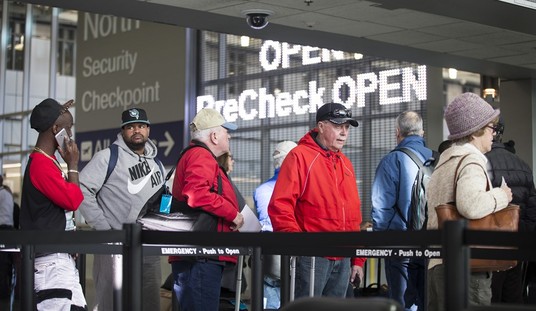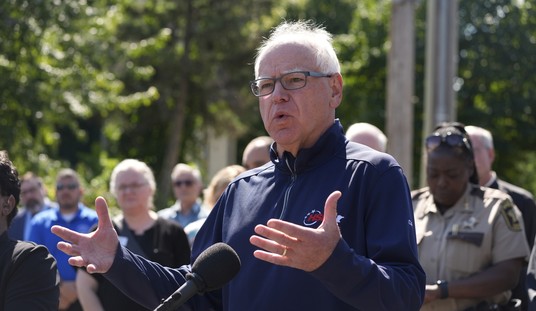=========
=========
Promoted from the diaries by streiff. Promotion does not imply endorsement.
=========
=========
Senator Bernie Sanders (I-VT), in his version of the ‘Green New Deal,’ promised us that his plan:
- Would create 20 million new “good paying, union jobs with strong benefits and safety standards”; and
- Would result in “100% renewable energy for electricity and transportation by no later than 2030 and complete decarbonization of the economy by 2050 at latest”.
Former Vice President Joe Biden’s “plan” is less specific, really just a collection of platitudes.
Senator Elizabeth Warren (D-MA) promised that “we will no longer force workers to make the impossible choice between fossil fuel industry jobs with superior wages and benefits and green economy jobs that pay far less. The jobs we create will be unionized jobs with accompanying pay scales and benefits. For too long, there has been a tension between transitioning to a green economy and creating good, middle class, union jobs. In a Warren administration, we will do both things.”
And Mayor Pete Buttigieg (D-South Bend, IN) wrote that he would:
Implement a Green New Deal with all available tools, including a carbon tax-and-dividend for Americans, and support major direct investment to build a 100% clean energy society.
Climate security is a life-and-death issue for our generation. Pete knows it is long overdue to take bold, decisive action to eliminate greenhouse gas pollution once and for all while creating new, high-paying jobs.
There’s no sense going through the also-running candidates, but, suffice it to say that they are all going to attack global warming climate change and create millions of new, strong, good-paying union jobs in the process.
Uhhh, about that? From The Washington Post:
The new Ford Mustang is electric. But battery-powered cars raise complicated questions for workers.
Analysts believe electric vehicles are the future, but they warn the trend could cut assembly jobs along the way.
By Eli Rosenberg and Faiz Siddiqui | November 19, 2019 | 10:51 a.m. EST
The newest Ford Mustang made a splash when it was unveiled this weekend. An all-electric SUV, the vehicle has enough room for a cooler under its hood and can reportedly accelerate from zero to 60 in well under four seconds.
But one of the biggest changes it could usher in might have more to do with the autoworkers it ultimately displaces, as the assembly of electric cars requires just a fraction of the workers needed for traditional vehicles. And as more automakers pivot toward electric vehicles, the news that Ford’s iconic brand would be moving to a fuel-powered engine for a battery-run system underscored how far along the electric car revolution has come in the United States.
Thud!
All of the Democratic candidates are strong on the global warming climate change, but what we are seeing, in actual implementation of Green New Deal ideas is that jobs are threatened, not created.
About 1 million workers are employed in auto manufacturing, primarily for vehicles with internal combustion engines, out of about 12.8 million manufacturing jobs. But analysts note that electric vehicles require significantly less labor, raising questions about how the coming shift could slim down such a critical part of the U.S. economy.
Electric vehicles raise a whole host of questions for autoworkers. The vehicles’ simplicity means they require significantly less manpower to make and assemble: the Chevy Bolt, for example, had 80 percent fewer moving parts than comparable fuel engines, UBS analysts have found. Their production is more simple and straightforward. And the parts they do use are now often made overseas.
“It could be that the cars become so modular and the assembly process becomes so straightforward [that] you picture them like Legos — you kind of bolt them together. You could need even less skill to put those cars together,” said Karl Brauer, an auto industry analyst who is the executive publisher of Autotrader and Kelley Blue Book.
Note that the article authors’ bios state that Mr Rosenberg is an economics reporter for the Post while Mr Siddiqui is a San Francisco based “technology reporter with The Washington Post‘s Business Desk covering companies such as Tesla, Uber and Lyft, Waymo and traditional automakers researching and deploying autonomous vehicles. Prior to that, he covered the D.C. Metro and local transportation scene, including the year-long SafeTrack program, the system’s chronic safety and reliability issues, and regional and federal officials’ push for governance and finance reforms at the agency. He has also covered Uber’s DC operations, Amtrak and the launches of countless local tech start-ups.” While we must assume that all reporters have some political leanings, these are men writing about the things they know, men who know how to research and have researched the topic.
Ford executives told investors that electric vehicles could reduce the company’s work hours per car by 30 percent, and its capital investment by 50 percent. Volkswagen Group CEO Herbert Diess said that the switch “means we will need to make job cuts.”
“Achieving this purely through fluctuation and partial retirement will be difficult,” he said.
There’s more at the original, but one thing is clear: the rosy employment scenarios the left project for their ‘Green New Deal’ are simply hogwash, broad statements with little reality behind them, designed to snooker gullible Americans to vote for them.
Where are the Democratic candidates telling the truth on their campaign websites about what their plans would actually entail? We noted that the dying liberal magazine The New Republic published an article telling us what changes in people’s lifestyles would be required:
First and foremost, that sacrifice includes paying higher taxes. In an interview with NPR on Friday, host Rachel Martin asked (Governor Jay Inslee (D-WA))¹ if he would commit to not raising taxes to cover his $9 trillion climate plan. Inslee said no, but only because “nobody running for office can make a statement about the future like that.” He then assured Martin that most of his climate plan would be paid for by private companies. “The government does have a role,” he admitted—but only an “appropriate public investment” would be made.
“Appropriate public investment” makes it sounds like the effect on the taxpayer will be minimal. But what is appropriate to save humanity? As Inslee’s plan rightly shows, it’s the exact opposite of minimal. The entire fossil-fuel economy has to be transformed in a very short amount of time. That’s going to cost trillions, an “appropriate” chunk of which is going to have to come from taxpayers. Whether that money comes from higher federal taxes on Americans, or taxes on private companies that pass down the costs to consumers, it doesn’t really matter. We will feel it, and it will hurt.
There is no avoiding this pain—and we’re not just going to feel it in our pocketbooks, but in our personal lives. Along with transitioning to a renewable-energy economy, any truly meaningful climate plan is also going to drastically reduce industrial meat production, expand public transportation, end our reliance on cars, and change the way cities are planned and built. The way we eat, the way we get places, and the way we live are all going to change. It will be much more than just an annoying inconvenience.
Well, telling the whole truth is not something that the Democrats would want you to hear. “(D)rastically reduce(d) industrial meat production” means that either you will have to pay a lot more for meat in your meals, or you won’t be able to have it. Law of supply and demand, you know? What The New Republic has said is the literal part of what I have said figuratively: climate change ‘solutions’ will take food off of your table!
“(E)nd our reliance on cars”? The American public not only love their automobiles, but the moves by Ford ($F) and General Motors ($GM) to drop sedan production demonstrate what American consumers want: SUVs, crossovers, hatchbacks and trucks, larger rather than smaller vehicles. Manufacturers attempt to produce the things that their customers want. Yet the Democrats’ various climate change proposals would restrict public choice and go hard against what consumers want.
More than that, it would impact how Americans live. The suburban dream home that so many families with children want, with actual yards in which their children can play outside, would become harder in which to live, because it would be harder to afford being able to get to and from work and school and the grocery store — where there’d be less meat, remember? — and everyplace else.
And for those of us living out in rural areas, like me, well we’d be just plain out of luck.
The New Republic tells us, though indirectly: forget all of that fresh air and sunshine, you’ve got to pack yourselves into the cities!
“(C)hange the way cities are planned and built”? Uhhh, our cities are already built; it’s pretty hard — and expensive — to change them now. Remember Boston’s $24 billion ‘Big Dig” fiasco? The project was initially projected to cost $2.4 billion and wound up costing $24.3 billion. Fraud on the part of Aggregate Industries, the ready-mix concrete supplier, certainly didn’t help matters.
Of course, it’s safe for things like that to be published in The New Republic, because nobody reads it anyhow. William Teach noted an article which pointed out that all of our fancy electronic devices are having a serious impact on carbon emissions, but that article was published in Australia; how many American voters will read it?
I have called the Democratic candidates a cavalcade of clowns, but they aren’t stupid people. Rather, they hope that the voters are mostly stupid people, and will fall for their plans to fight global warming climate change without doing anything really radical like raising questions on how they would actually work.
_______________________________________
¹ – At the time, Mr Inslee was still a candidate. He subsequently dropped out, but Mrs Warren then adopted Mr Inslee’s environmental plans.
_______________________________________
Please visit my Red State story archive for more of my articles.
My personal website, The First Street Journal, includes articles not necessarily in Red State’s paradigm.
You can follow me on Twitter.














Join the conversation as a VIP Member